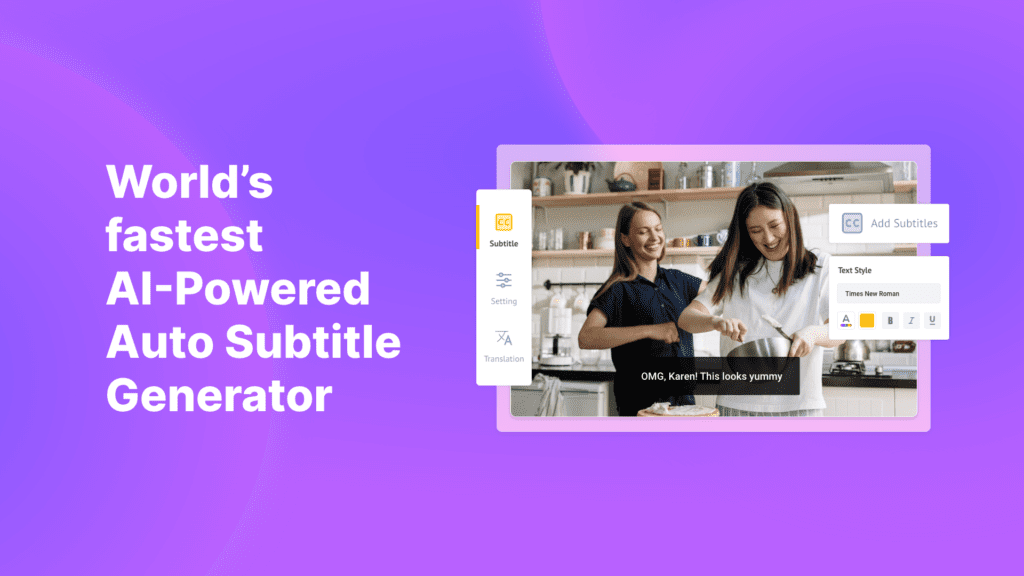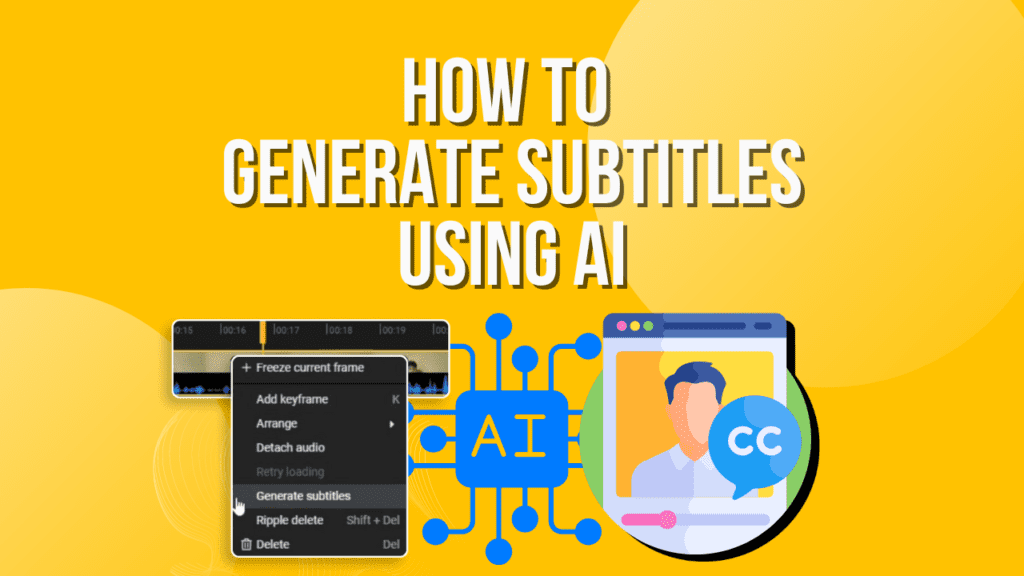Introduction
In the realm of media production, subtitling plays a crucial role in breaking down linguistic barriers and making content universally accessible. Traditionally, the process of subtitling has been labour-intensive, requiring meticulous attention to detail and a deep understanding of the nuances of language. However, the advent of Artificial Intelligence (AI) subtitle generators is revolutionising this process, offering a faster, more efficient means to produce accurate subtitles. This blog explores how AI subtitle generators are reshaping the subtitling processes, their impact on the industry, and the future of media accessibility.

The Evolution of Subtitling
Subtitling has historically been a manual process performed by linguistic experts who not only translate spoken dialogue but also ensure that cultural nuances and idiomatic expressions are conveyed accurately. This task involves several steps: listening to the audio, writing the text, syncing it with the audio, and editing it to fit within specific time constraints. The evolution of digital technology initially brought software tools to aid human subtitlers, but these still relied heavily on manual input.
Introduction of AI in Subtitling
The integration of AI into subtitling has marked a significant shift in how subtitles are created. AI subtitle generators use advanced algorithms and machine learning techniques to automate the transcription of spoken dialogue into text. Enable global audience access to your videos by generating subtitles effortlessly. Utilise an AI subtitle generator tool to instantly create subtitles in multiple languages, all for free. These systems are trained on vast datasets of linguistic material, enabling them to understand context, recognize speech patterns, and even interpret non-verbal audio cues in multiple languages.
How AI Subtitle Generators Work
AI-powered subtitle generators typically operate in several stages. First, automatic speech recognition (ASR) technology converts spoken language into written text. The AI then applies natural language processing (NLP) to refine the text, ensuring grammatical accuracy and contextual relevance. Finally, the system synchronises the text with the audio and splits it into manageable segments, timing each subtitle to appear on screen precisely when needed.
Advantages of AI Subtitle Generators
The use of AI in subtitling offers numerous advantages. The most obvious is speed. AI systems can process audio and generate subtitles much faster than a human can, reducing turnaround times from hours to minutes. This efficiency is particularly valuable in scenarios requiring quick turnarounds, such as live broadcasts or streaming new content in a competitive market.
Additionally, AI can handle multiple languages simultaneously, which simplifies the process of creating multilingual subtitles. This capability is increasingly important in a globalised media landscape where content producers aim to reach international audiences.

Accuracy and Limitations
While AI subtitle generators are highly efficient, they are not without limitations. The accuracy of AI-generated subtitles can vary depending on the clarity of the audio, the complexity of the language used, and the presence of regional accents or slang. However, ongoing improvements in AI training methods and the incorporation of feedback loops where human subtitlers review and correct AI-generated subtitles are enhancing their reliability.
Impact on the Subtitling Industry
The rise of AI subtitle generators is having a profound impact on the subtitling industry. For one, it is changing the skill set required for subtitlers. Rather than just linguistic skills, subtitlers now need to be proficient in editing and correcting AI-generated text, requiring a blend of technical and linguistic expertise.
Furthermore, AI is democratising subtitling, allowing smaller content creators and independent filmmakers to provide subtitles for their work without incurring prohibitive costs. This shift is broadening the distribution of diverse and independent content, fostering a more inclusive media environment.
Ethical Considerations and Future Outlook
As with any AI-driven technology, ethical considerations must be addressed, particularly concerning data privacy and the potential for biases in AI training datasets. Ensuring that AI subtitle generators are trained on diverse, inclusive datasets is crucial to avoid perpetuating stereotypes or misrepresenting cultural nuances.
Looking to the future, AI subtitle generators are set to become even more sophisticated. Innovations like real-time subtitling for live events and the integration of emotional intelligence to better capture the tone and nuances of spoken language are on the horizon. These advancements promise to further transform the landscape of media production and accessibility, making content more inclusive and accessible to global audiences.
Conclusion
AI subtitle generators are reshaping the subtitling processes by enhancing efficiency, reducing costs, and expanding accessibility. As these tools continue to evolve, they offer the potential to profoundly impact how we consume global media. By embracing these innovations, the subtitling industry can ensure it remains at the forefront of accessible media production, catering to a more diverse and connected world.
